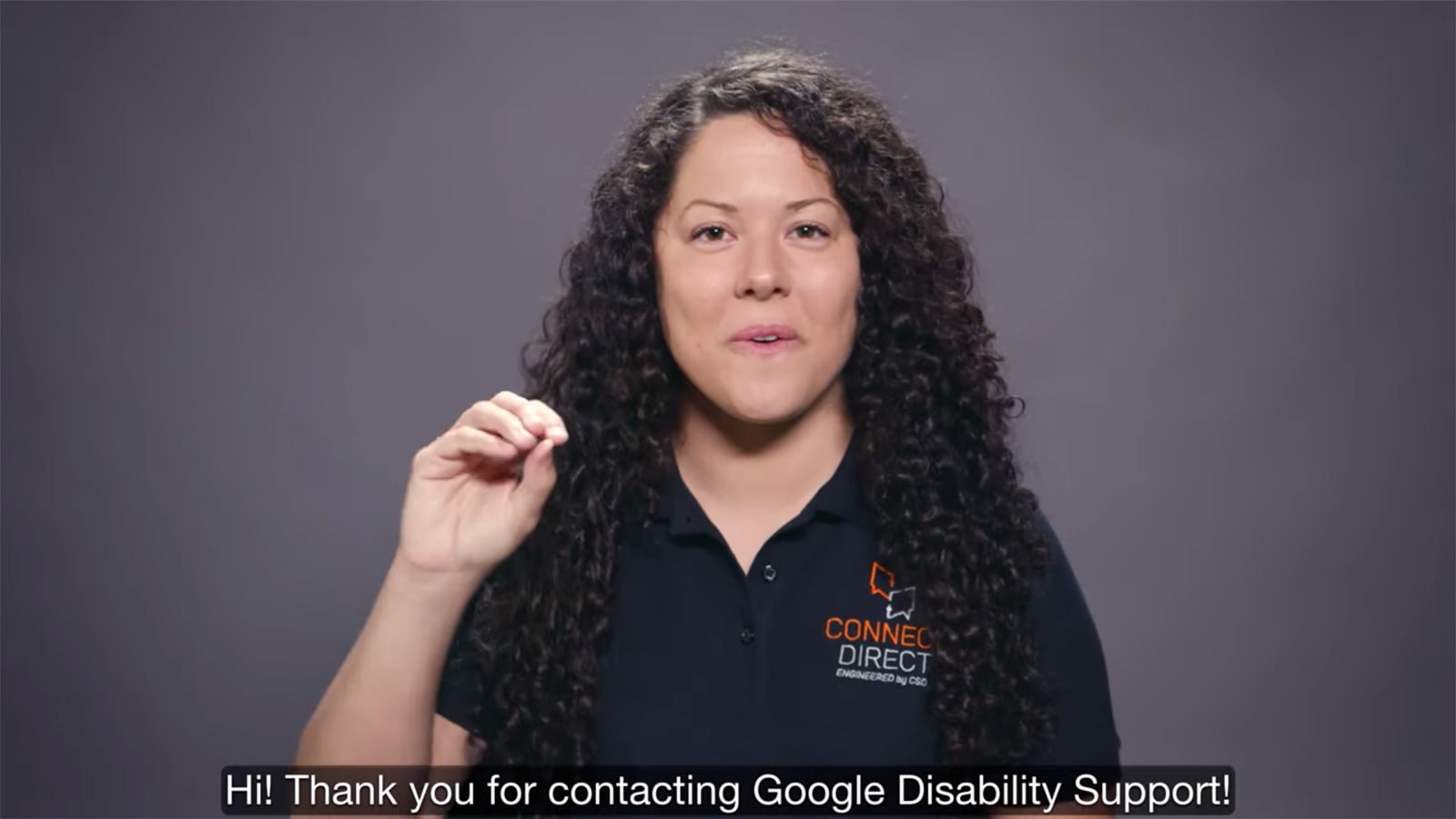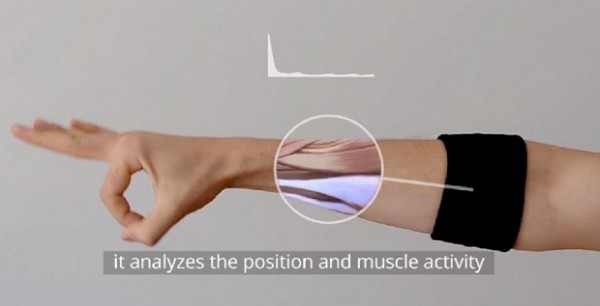Tag Archives: sign language
Google Disability Support is more accessible with sign language specialists
 Google is now ready to offer live help for accessibility features regardless of your hearing. The search firm now offers Disability Support through American Sign Language, letting you troubleshoot through video chat if you're deaf or hard-of-hearing...
Google is now ready to offer live help for accessibility features regardless of your hearing. The search firm now offers Disability Support through American Sign Language, letting you troubleshoot through video chat if you're deaf or hard-of-hearing...
Hawkeye Sign Language T-Shirt: Louder than Words
We Love Fine and writer Matt Fraction’s H Signs t-shirt is based on Hawkeye #19. That issue of Fraction’s and David Aja’s comic book series has been lauded for its portrayal of daily life for deaf people. In the comic, Clint Barton aka Hawkeye suffers severe ear damage and resorts to sign language. The comic itself is difficult to read, driving home deaf people’s daily struggles.
Available in purple, gray and black, the t-shirt spells out Hawkeye in sign language.
You can order the t-shirt from We Love Fine for $25 (USD). Matt Fraction is donating his commission from the sale of the shirts to the Signing Time Foundation, which teaches sign language to children.
[via Comic Book Resources]
Google Gesture Concept Gives the Speech-Impaired a Voice

Students at Berghs School of Communication in Stockholm imagined a wristband that could easily fit in Google’s portfolio. Google Gesture is a fictional device that translates gestures into speech, thus giving a voice to the ones who can’t normally talk.
The search giant has created software for the speech-impaired in the past, the app that translates speech into text being a great example. The reason why Google isn’t behind such a concept as the Gesture wristband is because such a device is most probably impossible to make for the time being.
This piece of wearable tech would be accompanied by an Android (what else?!) app, which would also be called Google Gesture. Judging by the position of the hand and the tension of the muscles, the wristband will be able to record sign language and transfer it to the app wirelessly, presumably via Bluetooth 4.0 LE. Once collected by the app, the data is translated into speech, so that other people can understand the gesture.
The idea behind the above video, which was created by marketing students at Berghs School of Communication in Stockholm, is that a lot of interesting conversations never take place simply because not many people know sign language. It’s wrong to believe that just because they cannot talk, the speech-impaired have nothing to say.
According to the students who have imagined it, Google Gesture would be able to turn sign-language into speech in real time. While that’s a bit improbable, it would help conversations to flow naturally.
Getting lost in translation would be impossible with such a device. More than that, Google Gesture could help people to interact, regardless of their country of origin. I think that such a device would be great not only for the deaf, but also for people who interact a lot with other cultures. Seeing how a hand gestures means something in one country and quite the opposite in another one, it would really be something if there was no room left for interpretations. For example, “thumbs up” is the equivalent of a well-done job in most countries, but in Greece and Turkey, this hand gesture symbolizes an insult. Same goes for the “V for victory” sign that’s interpreted differently in various parts of the world.
Be social! Follow Walyou on Facebook and Twitter, and read more related stories about the Hand-Tech glove that shoots video and translates sign-language, and the One2Touch Softpad S1 NFC keyboard.
Rings and Bracelet Translate Sign Language
Learning how to sign takes time and a whole lot of effort. Others get the hang of it fairly quickly, while some find that practice makes perfect. Of course, it doesn’t hurt to have something like the Sign Language Ring to help you throughout the entire process.
The conceptual device is actually a bracelet and ring combo. The bracelet comes with detachable rings that, when worn, detect the signing motions that are made by the wearer. It then “translates” the signs audibly via the bracelet, which has an embedded speaker. The bracelet can also translate voice to text, which is displayed on the built-in screen.
It shortens the learning curve and makes communication easier between those who are hard of hearing or are speech impaired with those who cannot understand sign language.


The concept was thought up by Cao Zu-Wei, Hu Ya-Chun, Huang Ching-Lan, Liao Po-Yang, Tsai Yu-Chi, and Yang Yi-Hsien, who drew inspiration from Buddha prayer beads for the bracelet’s design.
The Sign Language Ring is a 2013 Red Dot Design Award winner.
[via Red Dot]
EnableTalk Gloves Translate Sign Language to Spoken Language: Sound of Silence
A few months ago we saw a concept for a camera-based device that is meant to recognize sign language and translate it into spoken words. A Ukrainian-based team has something better: a working prototype of a smart glove with the exact same capability.

The quadSquad team won the 2012 Imagine Cup – Microsoft’s technology competition for students – for their invention, which they call EnableTalk. The glove has 15 flex sensors, an accelerometer, a gyroscope and a compass, all manned by an onboard microcontroller. The glove sends input via Bluetooth to a custom app made for Windows smartphones, which will then interpret the data and output spoken language.

The brief demo below show the tester spelling “hello” letter by letter, which the app is able to translate after just a brief delay:
Head to EnableTalk’s official website for more information on the product. I tip my hat off to quadSquad; I hope the team succeeds in releasing a commercial version of their device.
Sigma R&D shows Kinect sign language and Jedi savvy to win gesture challenge (video)
Sigma R&D has won first prize in a gesture challenge to show just how much more talent -- like sign language translation and light saber fun -- can be unlocked in a Kinect. Normally the Microsoft device can only scope body and full mitt movements, but the research company was able to track individual fingers with a Kinect or similar sensor, plus its custom software, allowing a user's hand to become a more finely tuned controller. To prove it, the company introduced a virtual lightsaber to a subject, tracking his swordsmanship perfectly and using his thumb extension to turn it on and off. The system even detected when a passing gesture was made, seamlessly making a virtual transfer of the weapon. The same tech was also used to read sign language, displaying the intended letters on the screen for a quick translation. The SDK is due in the fall, when we can't wait to finally get our hands on a Jedi weapon that isn't dangerous or plasticky. To believe it for yourself, see the videos after the break.
Filed under: Peripherals, Software
Sigma R&D shows Kinect sign language and Jedi savvy to win gesture challenge (video) originally appeared on Engadget on Wed, 25 Jul 2012 10:57:00 EDT. Please see our terms for use of feeds.
Permalink | Sigma R&D | Email this | Comments
Sigma R&D | Email this | Comments Sensory Gloves Enable Speech for those Who Speak with Their Hands

A new hi-tech glove will enable individuals to convert sign language into speech, making communication a lot easier and much less stressful for all parties.
If anyone has ever had a friend who uses sign language, they know how hard it can be to understand the person unless they either know ...
Continue Reading on Walyou
Sign language translator turns gestures into spoken letters, makes for a better world (video)
By far one of the greatest challenges of sign language has been to translate it for everyday folk that wouldn't know where to begin a conversation with the deaf. Cornell University engineering students Ranjay Krishna, Seonwoo Lee and Si Ping Wang -- along with some help from Jonathan Lang -- used their final project time this past semester to close this gap in one of the more practical solutions we've seen to date. Their prototype glove uses accelerometers, contact sensors and flex sensors to translate complex finger gestures from the American Sign Language alphabet into spoken letters: after converting hand positions to digital signals, the test unit both speaks out the resulting letters and sends them to a computer, where they can be used for anything from a game (shown in the video below) to, presumably, constructing whole sentences. Along with being accurate, the Cornell work is even designed with a mind towards how it would work in the real world, as the glove and its transmitter are both wireless and powered by 9-volt batteries. We hope that the project leads to a real product and an extra bridge between the deaf and the rest of us, but in the meantime, we'll be happy that at least one form of powered glove is being put to the noblest use possible.
Sign language translator turns gestures into spoken letters, makes for a better world (video) originally appeared on Engadget on Tue, 15 May 2012 07:45:00 EDT. Please see our terms for use of feeds.
Permalink | Sign Language Translation (Cornell) | Email this | Comments
Sign Language Translation (Cornell) | Email this | Comments 




